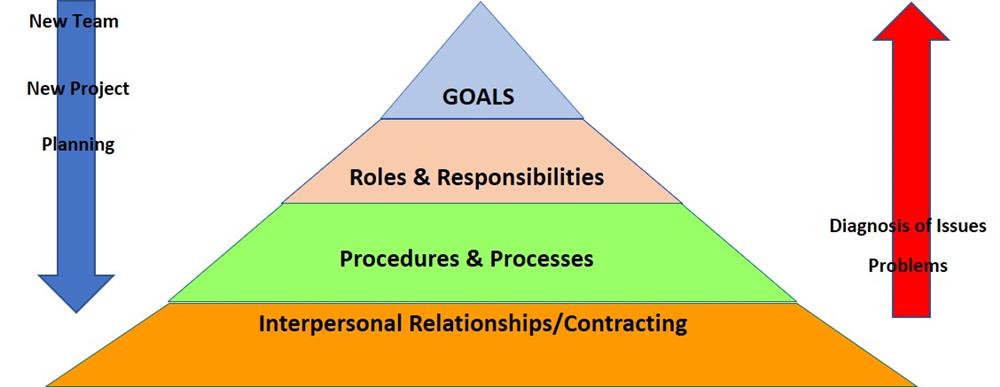There are a number of team effectiveness models, but among the first and most enduring is the GRPI Model. Rubin, Plovnick and Fry introduced GRPI in the 1970s, positing that there are four components of an effective team: goals, roles, procedures, and interpersonal relationships. I have relied on this simple, powerful model over my 30 years teaching leadership and team development, making a few adjustments along the way. Here’s my own take on GRPI:
Goals: The “what.” What are your clearly defined objectives? What are you trying to achieve? What results do you expect? Make sure everyone understands your expectations and they can share them accurately with others.
Roles & Responsibilities: The “who.” It is important to understand not only what your role is but the responsibilities that fall within your role. Again, it is about being clear and well-defined.
Processes & Procedures: The “how.” How will the work get done? For example, will you use agendas or other time management tools? Which decision-making method will you use? How will these decisions be made? This goes back to roles and responsibilities—knowing upfront who will make the final decision helps teams understand the process.
Interpersonal relationships/contracting: This one is about communication and the importance of establishing ground rules. How will the team resolve conflict? Build trust? Continue to be adaptable and flexible? It’s important to be candid, respectful, and open.

Putting the model to use
There are two ways to use the GRPI model. If you have just established your team, have a new project, or are in the beginning stages of the planning process, use the model from the top down.
When your team runs into an issue—for example, if ground rules are being broken—use the model from the bottom up. Review what you had established for ground rules, reiterate the process and procedures, clarify your roles and responsibilities, and finally restate the agreed-upon goals.
The GRPI Model has inspired any number of other team effectiveness models since its introduction. Here are a few of the more well-known ones:
-
The Wisdom of Teams. Jon Katzenbach and Douglas Smith’s model incorporates accountability, skills, commitment and other elements and was introduced in 1992.
-
T7 Model of Team Effectiveness. Developed by Michael Lombardo and Robert Eichinger in the late 1990s, it identifies five internal factors (thrust, trust, talent, teaming skills, and task skills) and two external factors (team leader fit, team support from the organization) that impact team effectiveness.
-
Five Dynamics of Team Work and Collaboration. In the early 2000s Frank LaFasto and Carl Larson developed this model based on five layers of components that increase effectiveness: team member, team relationships, team problem solving, team leadership, and organization environment.
-
Hackman Model of Team Effectiveness. J. Richard Hackman identifies five factors that increase the probability of an effective team: real team, compelling direction, enabling structure, supporting context, and expert coaching. He introduced his model in 2002.
-
The popular book The Five Dysfunctions of a Team covers the Lencioni Model, which states that knowing your team’s dysfunctions enables you to help build a more effective team. I use this philosophy when getting new teams together. Instead of asking “What is it we need to do to succeed as a team?” I ask, “What do we need to do to fail as a team?” It works!
While GRPI appeals to me for its simplicity, and is the model I routinely use in class, with teams, and in my personal life, what’s important is to find the one that works best for you. Feel free to adjust it as you see fit (as I have done with GRPI). And then, make it a part of your planning process with your teams.
Good luck!
